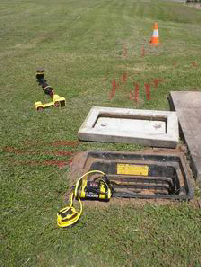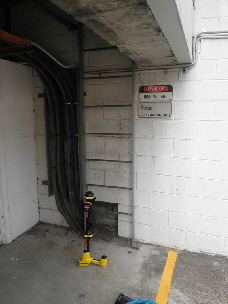Live power will create electromagnetic noise that can be located using specialised electromagnetic field detection units.
When would this service offer be required?
Electromagnetic Field (EMF) Detection Units are used to locate live power cables, metallic pipes and service cables that can conduct an EMF.
How does an electromagnetic field detection unit work?
They detect electromagnetic fields emitted by subsurface objects.
There are two more common methods of tracing subsurface objects, these are Passive and Active tracing.
Passive Tracing;
The unit detects electromagnetic noise generated by, live high current electrical power emitting at 50Hz.
The image on the right shows several, live high voltage
cables, entering the concrete slab. These can be traced
using a high quality electromagnetic field detection unit.
Active Tracing;
The unit detects a signal that is introduced into a conductive pipe or cable
The image on the right shows an active trace of
cables in a pit. Once the signal is introduced into
the conductive cable the unit can trace that signal
and locate the subsurface cable.







